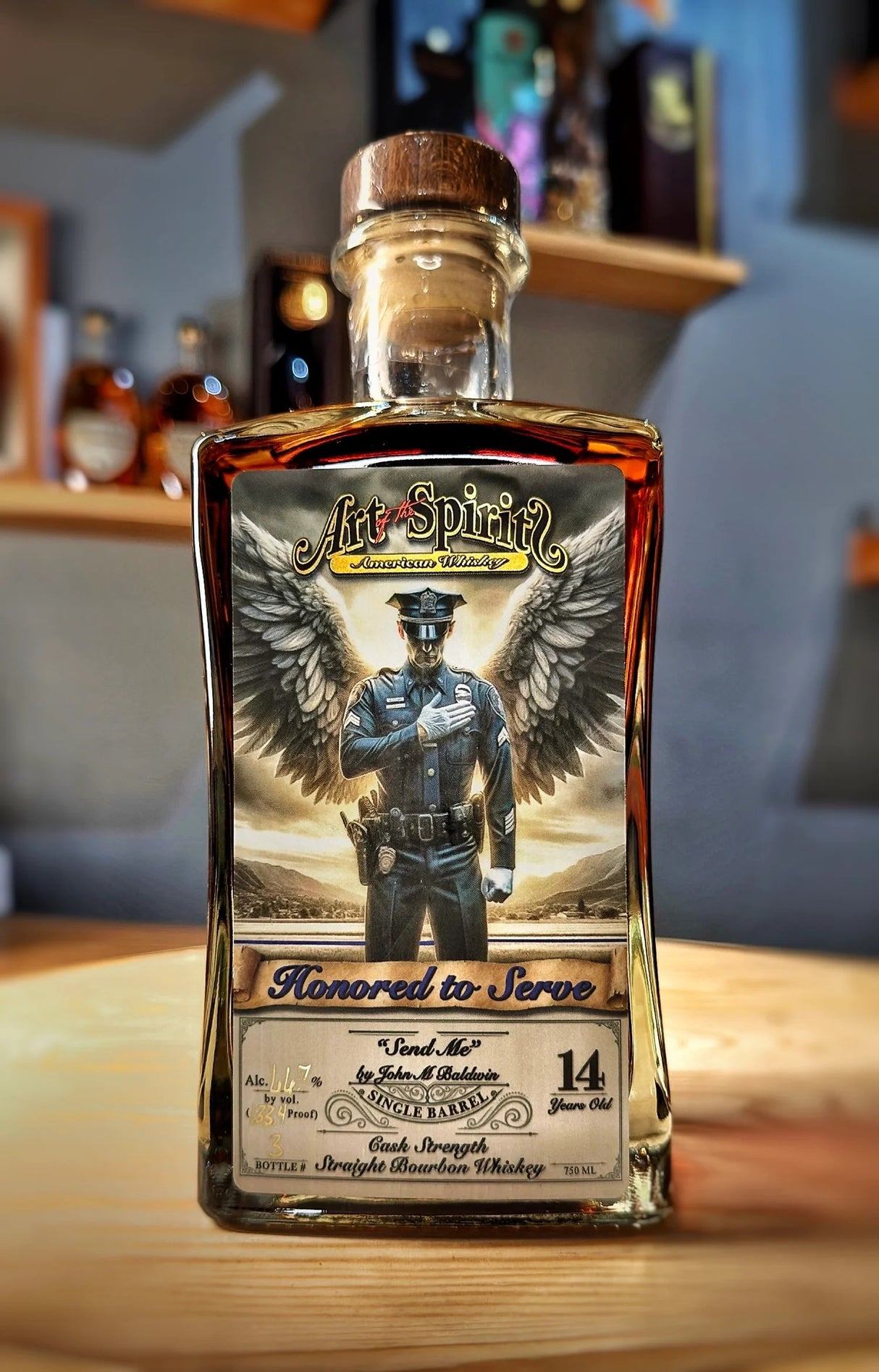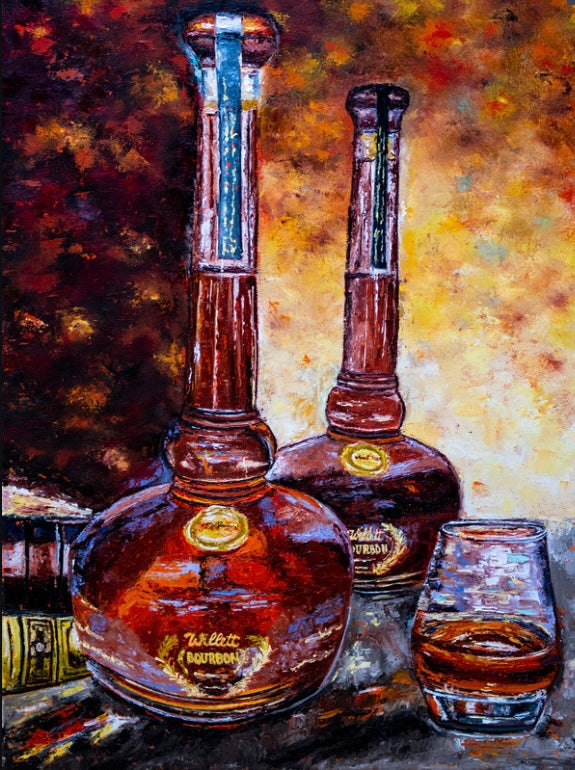Discover the World of Bourbon Art: A Journey Through Culture and Workmanship
The Importance of Whiskey Art in Celebrating Heritage and Craftsmanship in the Beverage Industry
The intricate relationship in between whiskey art and the celebration of heritage and workmanship within the drink market can not be overstated. Through thoughtfully created labels and containers, bourbon brands encapsulate their historical origins and the artisanal abilities that define their production methods. This imaginative measurement not only improves market appeal but likewise works as a channel for social narration, fostering a much deeper link between the consumer and the craft. As we explore the different elements of this topic, appealing concerns concerning the impact of modern trends on typical techniques emerge, motivating additional examination.
The Historical Origins of Whiskey
At the heart of bourbon's appeal exists an abundant tapestry of historic origins that map back to ancient human beings. The origins of scotch can be linked to the purification techniques of the Sumerians and Babylonians around 2000 BCE, where early forms of fermented grain drinks began to arise. Nevertheless, it was in the Center Ages that the art of distillation progressed significantly, especially in Ireland and Scotland, bring about the production of whiskey as we understand it today.
The term "scotch" itself stems from the Gaelic word "uisce beatha," suggesting "water of life." This expression highlights the cultural relevance of bourbon in Celtic cultures, where it was often associated with rituals, celebrations, and common bonding. By the 15th century, distillation ended up being an acknowledged craft within reclusive areas, leading the way for the establishment of lawful distilleries.
As profession courses increased, bourbon's appeal expanded, going beyond local limits and recording the passion of aficionados worldwide. Realism Art. This historical trip shows not only the workmanship behind scotch production but likewise its indispensable role in social and cultural contexts, marking it as a substantial drink throughout history
Artistic Expression in Branding
Scotch branding stands as a compelling junction of creativity and business, where aesthetic identity plays a critical duty fit consumer perception. The visual appeals of whiskey tags, packaging, and advertising materials mirror not only the brand name's story however additionally its core values and heritage. Through creative expression, distilleries share a narrative that reverberates with consumers, evoking emotions and triggering connections.
The usage of shade, typography, and imagery in branding offers to set apart items in a saturated market. For instance, standard motifs might evoke a sense of credibility and craftsmanship, while modern-day designs can symbolize development and forward-thinking. This calculated imaginative instructions enhances brand name recognition and commitment, allowing consumers to build an individual partnership with the bourbon they select.
In addition, imaginative expression in branding frequently works as a party of regional heritage. Distilleries frequently integrate neighborhood signs or historic recommendations right into their designs, producing a local color that welcomes customers to take part in a broader social experience. Eventually, the creativity behind whiskey branding not just improves visual allure yet also enhances the total story of the brand, fostering a deeper appreciation for the workmanship and heritage embedded in each container.
Craftsmanship in Bottle Style
The artistry noticeable in bourbon branding expands beyond visual identity to encompass the workmanship associated with container layout. Each container works as a vessel not simply for the spirit within, but additionally for the story it outlines its custom, beginning, and high quality. The style procedure needs precise interest to information, as components such as product, shape, and closure add significantly to the general understanding of the scotch.
Workmanship in bottle design entails picking high-quality glass that can boost the scotch's color and quality, while additionally supplying a responsive experience for the customer. The shape of the container must be both functional and visually appealing, often mirroring the heritage of the brand. Several distilleries choose distinct forms or embossed logos that stimulate a feeling of credibility and history.
Additionally, the label design and typography play an important role in interacting the brand's story. Whiskey Art. A well-crafted container not only captivates the customer's eye yet also strengthens the brand's commitment to top quality and custom. By doing her latest blog this, the craftsmanship of bottle design becomes an important element of the whiskey experience, merging creativity with a profound regard for heritage
Cultural Significance of Whiskey Art
Commemorating custom and workmanship, the cultural significance of scotch art transcends mere looks, intertwining with the historic and social stories of the areas from which it originates. Each bottle works as a canvas, showing the unique stories, mythology, and traditions that have actually shaped local whiskey-making practices. The complex layouts typically show the heritage of the distillers, incorporating symbols and themes that reverberate with the society and worths of their neighborhoods.

In addition, bourbon art plays a crucial function continue reading this in public events and parties, working as a concrete link between people and their shared experiences. By appreciating the creativity in scotch product packaging, consumers cultivate a much deeper understanding and regard for the craft, inevitably improving their pleasure of the drink itself.
Modern Trends in Whiskey Discussion
In current years, the discussion of bourbon has advanced to show modern preferences and patterns while still recognizing typical craftsmanship - Bourbon Art. Distilleries are increasingly concentrating on aesthetic components that improve the general alcohol consumption experience, linking the space in between heritage and modernity
Ingenious container designs have actually arised, typically incorporating sustainable materials and creative tags that tell compelling tales. Many brand names currently team up with regional musicians, instilling their products with unique visual expressions that reverberate with consumers. Additionally, limited-edition launches are commonly packaged in collectible containers, including value and charm for connoisseurs.

Verdict
In conclusion, bourbon art serves as an important avenue for sharing the heritage and workmanship inherent in the drink sector. With complex branding, ingenious container designs, and culturally significant artistic aspects, whiskey brands efficiently honor their practices and link with customers. This imaginative narrative not just elevates the gratitude of site link bourbon but additionally enhances community identity and pride amongst manufacturers. Inevitably, bourbon art plays a vital function in preserving and commemorating the rich social tapestry of whiskey-making.


Craftsmanship in container style entails picking high-grade glass that can improve the whiskey's color and clarity, while likewise offering a responsive experience for the customer. In this method, the workmanship of container design comes to be a vital element of the whiskey experience, combining creativity with a profound regard for heritage.
In verdict, whiskey art offers as a crucial channel for expressing the heritage and workmanship intrinsic in the drink industry.